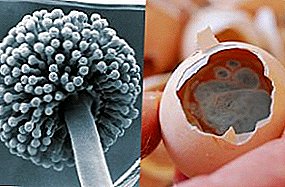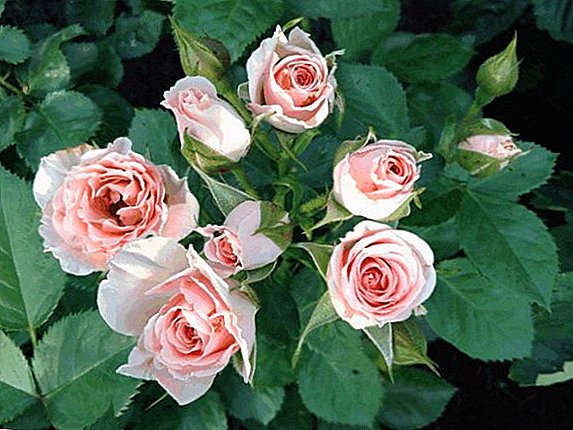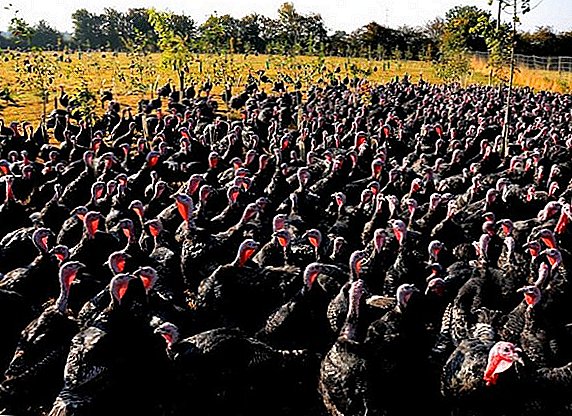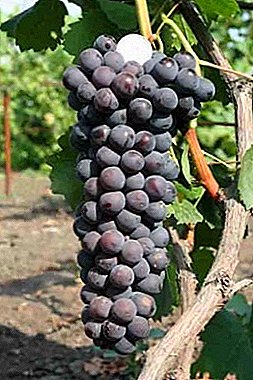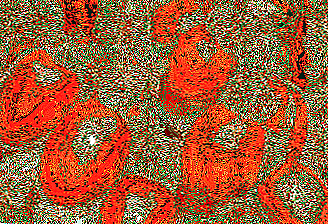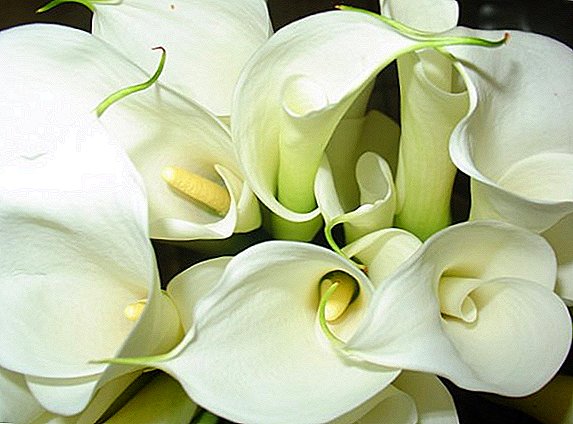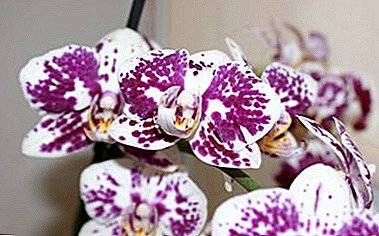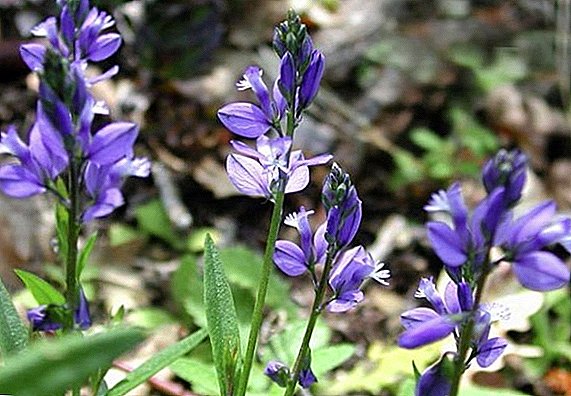 Among the many medicinal plants occupies a special place Polygala. For centuries, the Russian people have used the root and stems of this unique herb for the treatment of various diseases, which is confirmed by many recipes from ancient herbalists. Speech in our article will focus on the source-grass.
Among the many medicinal plants occupies a special place Polygala. For centuries, the Russian people have used the root and stems of this unique herb for the treatment of various diseases, which is confirmed by many recipes from ancient herbalists. Speech in our article will focus on the source-grass.
Botanical description
Sometimes the spring-grass is hidden behind more popular names, such as hyssop, the milky root, the moulin, Voznesensky, bluish color. The spring is a beautiful perennial plant with a direct stem from 15 to 30 cm tall and lanceolate leaves. It blooms in May and June, small blue, white or pink flowers, collected on the tops of the stems fancy tassels. The flowers have five sepals and an accrete five-lobe halo. Grass gives fruits, like flattened boxes on the sides, in July or August.
Spread
The spring or hyssop can be found in almost all areas where the climate is temperate. This is mainly the European part, where the grass grows along the river banks, on pasture meadows and forest edges, preferring moisture and a lot of light.  If you decide to decorate your garden with this useful plant, then take note: the most beautiful flowers of the spring grow in the mountains of the North Caucasus.
If you decide to decorate your garden with this useful plant, then take note: the most beautiful flowers of the spring grow in the mountains of the North Caucasus.
Did you know? The ancient Greeks knew well the spring grass. They gave the name to this plant, because "poly" in Greek means "a lot", and "gala" is "milk".
Popular species
There are more than 30 types of Polygala. The most popular are:
- vulgaris (vulgaris);
- comosa (crested);
- amara (bitter);
- cretacea (chalk);
- sibirica (Siberian);
- myrtifolia (myrtle);
- tenuifolia (thin-leaved).
 The maximum height of the plant is 30 cm. Blue or pinkish five-petal flowers during flowering period are collected at the ends of the stems in a brush. Decoctions from this plant are useful in sputum discharge, and also effectively suppress inflammatory processes. Tinctures can be used for laryngitis, bronchitis, pneumonia, and even bronchial asthma. The main secret of Polygala vulgaris is triterpenic saponins in its composition.
The maximum height of the plant is 30 cm. Blue or pinkish five-petal flowers during flowering period are collected at the ends of the stems in a brush. Decoctions from this plant are useful in sputum discharge, and also effectively suppress inflammatory processes. Tinctures can be used for laryngitis, bronchitis, pneumonia, and even bronchial asthma. The main secret of Polygala vulgaris is triterpenic saponins in its composition. Siberian breed grows in the steppe or in the forest-steppe of the Caucasus, the Far East and, of course, in Western and Eastern Siberia. It differs in thin bushy stalks, the leaves in the upper part of the stem are lanceolate, the lower ones look more like an ellipse with a pointed edge. Very unusual sepals - green, but white at the edges.  The flowers themselves are either blue or purple. Drugs based on the root of the Siberian origin help to cure bronchitis and pneumonia, and also normalize the intestinal microflora in mucous diarrhea.
The flowers themselves are either blue or purple. Drugs based on the root of the Siberian origin help to cure bronchitis and pneumonia, and also normalize the intestinal microflora in mucous diarrhea.
In the thin-leaved Polygala, the stems are branched, not more than 35 cm high. You can see narrow small leaves on them, and blue or very bright purple flowers fall from them with tassels. Such grass grows on the mountain slopes of Altai and the Far East, less often this species can be found in Siberia.  Chinese healers prescribe decoctions from the base of tenuifolia for VSD, neurosis, diabetes and inflammation of the kidneys. Tibetan medicine adds to the list of diseases of the gastrointestinal tract, inflammation of the genitourinary system, vascular spasms.
Chinese healers prescribe decoctions from the base of tenuifolia for VSD, neurosis, diabetes and inflammation of the kidneys. Tibetan medicine adds to the list of diseases of the gastrointestinal tract, inflammation of the genitourinary system, vascular spasms.
Siberian and fine-leaved bedrock is most valuable with its roots. They contain tenuifolic acids (1%), essential oil, polyhalic acid, resins, isoluzine, etc.
Myrtle leaf spring is a meter-high shrub, sometimes it grows even above 1 m. Thick oval foliage has a variety of green shades and looks very nice. At the ends of thin branches there are small tassels of bright violet flowers. This is an ornamental plant that fell on our window sills from South Africa.
Thick oval foliage has a variety of green shades and looks very nice. At the ends of thin branches there are small tassels of bright violet flowers. This is an ornamental plant that fell on our window sills from South Africa.
Important! Only myrtle leaf is intended for indoor cultivation.
Bitter hyssop is fully suitable for use - both flowering stem and root. According to its botanical description, it is closer to the species Vulgaris - the same straight stems, leaves that are larger from the root and decrease to the top, blue, white or reddish flowers. It is found both on forest edges and in meadows. From a fresh plant they make a homeopathic additive that facilitates the discharge of sputum with an intense cough, as well as relieving coughing attacks in whooping cough. Also, the bitter herb is famous for its ability to establish a metabolism, so traditional medicine has found wide application in the treatment of gout, rheumatism, dropsy, etc.
Cretaceous spring is a rare species and is listed in the Red Book.  It grows on the chalk slopes of the Seversky Donets basin. This species is distinguished by its outstanding, extensive root, which is a valuable raw material for the production of drugs for bronchitis. With the onset of autumn, the root is dug out, then dried in the shade. Then a decoction of this root helps in expectoration of sputum.
It grows on the chalk slopes of the Seversky Donets basin. This species is distinguished by its outstanding, extensive root, which is a valuable raw material for the production of drugs for bronchitis. With the onset of autumn, the root is dug out, then dried in the shade. Then a decoction of this root helps in expectoration of sputum.
The tufted weed from the family of the one has simple, almost bare stems on which pink or purple floral brushes appear during the flowering period. You can find it in the steppe and at the edge of the forest in the European part of the world. Stems and leaves are rarely used in medicine, often collect the root, rich in vitamin C and valeric acid. Infusions from the root are used for bronchial asthma, for laryngitis and pneumonia. It is also possible external use for the speedy healing of abrasions and open wounds.
Chemical composition
The root of the plant contains the following chemicals:
- triterpene saponins (1%);
- tenuifolic acid;
- isoluzine;
- salicylate ester;
- methyl ester;
- polyhalic acid;
- fixed oils;
- essential oils;
- Senegin;
- polygolite alcohol;
- phenolic glycoside;
- resin.
 In the grass, scientists have found:
In the grass, scientists have found:- saponins;
- flavonoids;
- gaulterin;
- fat and essential oils;
- vitamin C;
- polyhalic acid;
- tannins;
- glycosides;
- tannins.
Medicinal properties
Polygala rhizome extract can be used externally if any skin lesions develop. For example, boils or ulcers. Broths from the root of the gulf increase the tone of the smooth muscles of the intestinal tract.
As part of various herbal teas from grass collection, grass and spring is used to treat insomnia, nervous disorders, and atherosclerosis. Also, tea is necessary for those who suffer from anemia.
Periwinkle, hemp nettle, ivy-shaped buddy, centaury ordinary, Crimean iron-clad, will help to overcome anemia.

Did you know? In the old herbalists with traditional recipes, you can find a recipe for one-of-a-kind tea and a note to it that it promotes the production of breast milk from a nursing mother.
Saponins, which are so famous for the source, reduce the viscosity of mucus in the bronchi, and also stimulate the work of salivary and mucous glands, so the use of decoctions is so effective in bronchitis, pneumonia and other diseases that require sputum thinning.
Fans of traditional medicine emphasize the ability of old infusions to improve appetite, remove excess fluid from the body, get rid of diarrhea, and fight male impotence.
The Chinese believe that the source contributes to longevity. Also, Chinese healers with this plant treat hypertension, heart disease and nephritis.
Harvesting and storage of raw materials
The roots needed to further create healing infusions and decoctions are dug in August or September, depending on when the fruits begin to ripen. They are shaken off sticking clods of earth, but do not wash. This is followed by a drying stage, either in the open air or in a room that has good ventilation. If you have a dryer, you can use it.  The main thing is that the temperature does not rise above 35 degrees. The dried root is cleaned again from the ground, this time with a brush of medium hardness. You did everything right, if the dried root is gray, slightly yellowish, and there is no smell.
The main thing is that the temperature does not rise above 35 degrees. The dried root is cleaned again from the ground, this time with a brush of medium hardness. You did everything right, if the dried root is gray, slightly yellowish, and there is no smell.
Important! The medicinal properties of the root root are retained for four years.
The source of ordinary and bitter fully suitable for the preparation of medicines. Gather herbs in May-July, when they are just starting to bloom. They are then dried, either in the thick shade of garden trees, or in a room with good ventilation. Store the harvested raw materials in a dry place.
Application
The spring grass is widely used in traditional medicine. Some species of this plant are useful not only by the root, but also by the stems. Broths, tinctures, herbal teas - this is an incomplete list of products based on Polygala. Also, the garden attracts gardeners with its tender, quivering beauty, which becomes brighter and juicier when there is a lot of it.
In gardening
There are breeding varieties specifically designed for gardens. They bloom profusely, resistant to drought and frost. For example, these are varieties of limestone, which look particularly advantageous in rockeries:
- variety "Bulley's Form", characterized by larger flowers, as well as their deep, rich blue color;
- grade "Lillet" blooms very compact, small blue flowers; the flowering period is the longest of all varieties. There is only one caveat - this grass tolerates a temperature below 15 degrees poorly, therefore for the winter landing sites must be mulched with compost.


The next contender for a place in your garden, of course, will be a box head, with magnificent two-color flowers: bright yellow centers are framed with purple petals, less often the color of the petals goes into crimson. Against the background of dark green leathery leaves the flowers look even juicier and brighter. Decorative varieties of this species: var. grandiflora, var. purpurea, var. rhodoptera.
Finally, a thermophilic hybrid source can be grown in tubs and on window sills, as well as myrtle, as mentioned above.
When making gardens, the springs are used for:
- giving the garden landscape harmony and completeness;
- decorating slopes, supporting walls or raised flower beds;
- a bright accent in places where sand is laid;
- decoration of borders and flower beds in their front;
- decoration of balconies and terraces.
Aconite, actinidia, wisteria, honeysuckle, clematis, climbing rose will help to decorate a gazebo and a terrace next to the house.
In medicine
The plant has choleretic, diuretic, wound-healing properties, due to which it has become widespread not only in European but also in Asian medicine.

Did you know? The Indians knew about this grass and used local wastes as soap. From this property is derived the name of the main substance saponin - "sapo" in Latin means "soap". The specificity of saponins is that they reduce the surface tension of water, and are also capable of forming resistant foam.Since the therapeutic properties of hyssop have already been mentioned above, we will not repeat, we only note that it is used not only in folk medicine, but also in official medicine, for example, in the manufacture of auxiliary drugs for diabetics (due to the plant’s ability to slightly reduce the sugar level in blood). Also from this plant make healthy supplements.
Infusion
Infusion is prepared from the leaves and flowers of the spring. Only 1 tsp of dried grass is poured with boiling water of 0.4 l. The mixture should be infused for two hours, then it must be drained. The finished tincture is taken 3-4 times a day, 100 mg 15 minutes before meals. It has a calming effect, helps with cramps and fever, restores appetite and male power. It is also used for diarrhea.
Decoction
Broth prepared from rhizome. About 10 g of dried root must be crushed, pour boiling water (250 ml) and cook for half an hour in a water bath. Then the broth is infused until it cools. Next, you need to filter it and add water there, so that the volume of decoction will return to the original one. Water is better to add boiled, and not just purified. Take the drug as a medicine: for 1st. l half an hour before meals, 4 times a day.  This is an excellent expectorant, thinning mucus and helps in its early exit. Also decoctions are effective, as an additional treatment of cystitis.
This is an excellent expectorant, thinning mucus and helps in its early exit. Also decoctions are effective, as an additional treatment of cystitis.
Compress
Compress can be made from freshly picked grass (ordinary or bitter source), it is necessary for the speedy healing of wounds, to relieve inflammation in case of skin rash. Pound the grass until the juice stands out. Then this gruel is spread with a thin layer on a piece of pure cotton fabric and applied to the right place. For greater effect, a compress can even be fixed and walked with it for some time.
Did you know? Saponins, which are part of the root of the stream, with the entry into the body contribute to the penetration of hemoglobin into the blood plasma, making the walls of erythrocytes permeable.
Extract
The extract is obtained from the roots. It is necessary in the fight against purulent ulcers and boils. To prepare the extract, 80 g of dried root (4 tbsp. L) is crushed to the maximum and pour 1 l of boiling water. Then about 20 minutes allow to infuse. The resulting mixture is filtered and boiled down to half the original volume. To use the extract, they are impregnated with a piece of gauze and applied to sore spots.
Syrup
 Syrup is prepared on the basis of a decoction or Polygala root extract. Add baking soda (coffee spoon to a glass), ammonia solution (a couple of drops for the same amount) and some sugar (to taste). Apply it for the treatment of asthma, 1-2 tbsp. l five times a day.
Syrup is prepared on the basis of a decoction or Polygala root extract. Add baking soda (coffee spoon to a glass), ammonia solution (a couple of drops for the same amount) and some sugar (to taste). Apply it for the treatment of asthma, 1-2 tbsp. l five times a day.
Contraindications
Polygala root can irritate the walls of the stomach and intestines. For this reason, people suffering from gastritis or ulcers, it is better to refrain from conventional decoctions and tinctures. Children up to three years, these drugs are also contraindicated. Even if you do not belong to a risk group, you should not forget about individual intolerance, which you may not even suspect, so start taking the tinctures little by little, watching the reaction of the body.
Cultivation of the source
In addition to myrtle leaflets, the rest of the Polygala family loves being around a lot of light. Also, they are not afraid of drafts, and the wind is not a hindrance.
Choosing a place
Garden varieties of hyssop prefer sandy soils, and this is their main specificity. With the help of limestone and decorative grass, you can create delightful rosettes, rock arias or rabatki. The main thing is that in the places where the plant is planted there is no stagnation of moisture. Although the spring recognizes wet soil, it’s still a “swamp” that is contraindicated.  Varieties planted in pots have about the same requirements. The soil should be peat-sandy, without turf. Indoor ground is planted only in pots with a large size and several drainage holes. It is also necessary to place a drainage layer at least 7 cm high in it. Plants growing in containers need bright light.
Varieties planted in pots have about the same requirements. The soil should be peat-sandy, without turf. Indoor ground is planted only in pots with a large size and several drainage holes. It is also necessary to place a drainage layer at least 7 cm high in it. Plants growing in containers need bright light.
Landing
Grass growing in containers is transplanted every year. Carry out this procedure for several months before planting in the garden (approximately in April, when there is a resumption of growth). At the same time, the soil is changed, and the container is taken a little more each time than it was before.
The temperature of the plants below 5 degrees is poorly tolerated, and therefore they need to be mulched before the winter cold. You can carry out the procedure with humus or compost. It is also a good idea to cover the landing site with leaves.  The spring needs additional feeding, since the sandy soil does not give full access to nutrients. In the period when growth and flowering occurs, it is necessary to fertilize planting sites every two weeks. It may be mineral fertilizers or organic supplements, the main thing is not to forget about this important matter.
The spring needs additional feeding, since the sandy soil does not give full access to nutrients. In the period when growth and flowering occurs, it is necessary to fertilize planting sites every two weeks. It may be mineral fertilizers or organic supplements, the main thing is not to forget about this important matter.
Important! Those plants that decorate your home in pots and tubs, also need to be fertilized at least once every three weeks. With the onset of autumn, these activities can be gradually negated.
Watering and moisture
Although the spring is known as a lover of the sun and sand, yet it is not a cactus, and the arid soil will damage it. In order for the plant to please the eye, it is necessary to keep the soil in a state of light humidity. This applies not only to the flowering period, as the bush itself also needs moisture for proper development.
During dry periods, at least once a week should be thoroughly saturated with water. If the heat is too strong, and rain is not expected, then watering can be carried out every day, preferably in the early morning. As for tub plants, their soil should also remain constantly wet. The soil is allowed to dry 5-8 cm deep, but drying is not allowed. 
Diseases and pests
Polygala is used to the harsh conditions of the wild and is not afraid of even rot. But aphid, which can fall on a bush from a nearby plant, can be a real threat. If you find a disease, you will have to handle all the bushes with strong insecticides. Prevention will be the best measure: if aphid appeared in your garden and you discovered it, then you should spray all the plants and prevent the disease from spreading.
The hyssop or the spring-grass is a unique plant, not only useful in medicine, but also beautiful.It is not as difficult to grow as most ornamental plants, and even if you decide to plant a medicinal look on your plot, it will still please the eye and lift your spirits.


